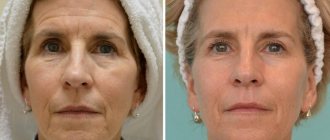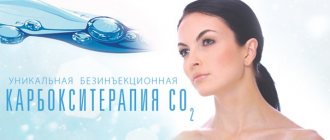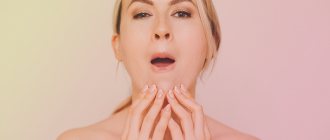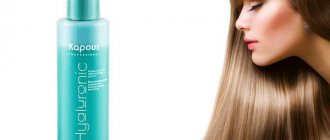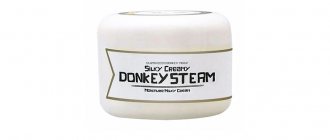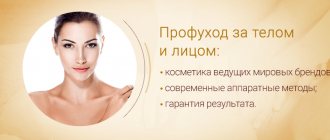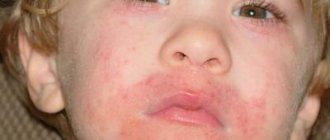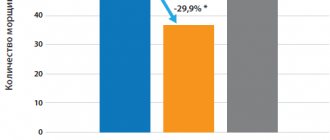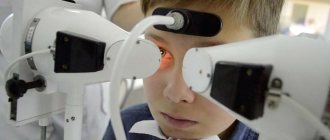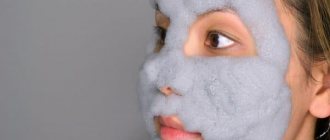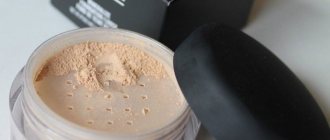The need for masks is not decreasing, but only growing, so everyone is trying to make money. But does a medical mask really protect?
Stars and Instagram bloggers are selling masks under their own brand for obscene amounts of money. Keti Topuria, Tina Kandelaki, the Little Big group and other famous personalities turned ordinary fabric masks into a fashion accessory with a price tag of up to 2,000 rubles.
Meanwhile, biochemists at the University of Manchester have developed a special snood bandage that destroys germs. It is much easier to breathe in it than in a mask. On March 2, the Ramensky Instrument-Making Plant, part of the Rostec corporation, announced the creation of innovative antimicrobial respirator masks with TIOKRAFT air purification technology. Once on the filter, any organic matter (including infection) decomposes into carbon dioxide and water. After 2 months they still haven’t gone on sale.
Doctors paid attention to protective face shields. On the one hand, they do not fit as tightly as a mask, but they have their advantages. Therapist, blogger, Philip Kuzmenko reminds that the screen also protects the eyes, unlike the mask. Doctor of Medical Sciences, immunologist-allergist Andrei Prodeus also believes.
Approach the choice of protective equipment with the due degree of responsibility.
Why do you need an oxygen concentrator?
Oxygen therapy is used for diseases accompanied by disturbances in the respiratory processes (ventilation of the lungs and gas exchange in their vessels), as well as in situations where independent breathing is impossible (during and after surgical interventions, injuries, disturbances of consciousness). There are non-invasive (external) and invasive (with oxygen delivery directly to the lower respiratory tract) methods of oxygen support. Non-invasive oxygen therapy is carried out using oxygen breathing devices: oxygen concentrators, oxygen cylinders and bags, devices for supplying oxygen into the respiratory tract under pressure, as well as through a centralized oxygen supply system in hospitals. Invasive oxygen therapy includes artificial pulmonary ventilation (ALV).
An oxygen concentrator is a convenient portable device for saturating the lungs with oxygen. You can use an oxygen concentrator not only in medical institutions, but also to breathe oxygen at home.
Peculiarities
The foaming effect not only makes using a bubble mask a pleasant experience. It increases the saturation of the upper layers of the epidermis with oxygen, improves the penetration of active ingredients into the skin. Main features of the funds:
- In the paste form, the packaging is enough for 20-25 applications. This is several months of effective skin care.
- The absorbents in the composition help the skin to be deeply cleansed, removing remaining dirt and sebum. Thanks to its foam-like structure, beneficial components quickly penetrate the cells, nourishing them.
- There is no drying effect. Masks are very gentle and do not remove moisture from the dermis, only impurities.
Most often, bubble masks are chosen by people with oily, problematic skin, rashes, and blackheads.
Operating principle of an oxygen concentrator
The oxygen content in the air is 21%. The operating principle of an oxygen concentrator is to create a flow of pure oxygen for breathing. Air from the external environment passes through the water tanks of the oxygen apparatus, in which a breathing mixture with an oxygen content of about 95% is formed. The oxygen mixture is humidified and supplied to the patient through special tubes.
You can breathe oxygen through an oxygen mask that covers your nose and mouth, or through nasal cannulas (tubes that are inserted into your nostrils). The use of nasal prongs allows you to take food and water, as well as talk freely, without interrupting the oxygen therapy process.
Compound
A bubble mask may include various components:
- Soda;
- Clay;
- Activated carbon;
- Snail slime;
- Aloe juice and pulp;
- Other useful substances.
The exact composition can be found on the packaging, where manufacturers are required to list all components. It is also important to pay attention to the position of caring components in the list of ingredients. The closer to the beginning of the list the beneficial substances are, the greater the percentage of content relative to the total mass of the product. If preservatives, flavors and other components predominate in the initial positions, and caring elements are at the end of the list, it is better to choose another mask.
Indications for oxygen concentrator
An oxygen support device is necessary for respiratory (pulmonary) failure. Respiratory failure is a pathological condition in which the level of oxygen in the blood decreases (saturation) and oxygen starvation of organs and tissues develops.
An oxygen concentrator may be needed for acute and chronic diseases of the cardiovascular and pulmonary system pathologies. Indications for the use of oxygen therapy through an oxygen concentrator include:
- acute respiratory distress syndrome;
- viral and bacterial pneumonia (including those caused by the Covid-19 virus);
- bronchial asthma;
- chronic obstructive pulmonary disease;
- bronchiolitis;
- bronchiectasis;
- idiopathic pulmonary fibrosis;
- cystic fibrosis;
- pulmonary edema;
- heart failure.
A decrease in oxygen in the blood is accompanied by complaints of shortness of breath and a feeling of lack of air. A drop in saturation is also accompanied by rapid breathing and heartbeat, pallor and a bluish tint of the skin (primarily the lips and fingertips turn blue), severe weakness, heart pain and a feeling of anxiety.
Non-invasive ventilation (NIV) with positive pressure
The use of this technique is accompanied by the risks of aerosolization associated with the use of leaky single-tube breathing circuits, while the patient exhales into the environment. However, the use of two-pipe circuits with two viral filters makes the system airtight when NIV is performed in a room with negative pressure. The use of NIV is possible during apnea oxygenation. Use NIV in CPAP/PSV mode, keep PSV at 0 cmH2O, add PEEP only if patient saturation does not reach target values at FiO2 100%.
!NB If you are using a pre-oxygenation respirator, you MUST disconnect the breathing circuit above the viral filter before removing the mask. Otherwise, COVID-19 will spread throughout the room. See Triple C protocol below.
What should the saturation be?
Saturation is a measure of the amount of oxygen in the blood. The norm of saturation in adults is 95-100%. The oxygen levels in the blood change with changes in altitude due to the influence of atmospheric pressure on the ability of gases (including oxygen) to dissolve in liquids (blood).
Saturation is measured using pulse oximetry. A portable pulse oximeter for adults is usually worn on a finger. Deviations of saturation from the norm in healthy people can be observed when:
- the presence of a manicure coating on the nails (materials for covering the nails block infrared radiation, which is used in the pulse oximeter);
- cold fingers (in a cold room, outside during the cold season, with Raynaud's syndrome);
- arrhythmias;
- finger deformities (for example, with osteoarthritis);
- hand tremors (with parkinsonism).
Saturation below 92% is considered critical. Respiratory failure leads to a decrease in the supply of oxygen to tissues and organs, as a result of which the functioning of all body systems is disrupted. First of all, the organs of the central nervous system (brain) suffer from a lack of oxygen.
There is no single indicator of saturation that would be considered lethal. A person’s tolerance to oxygen starvation depends on the general health of the body, the presence of chronic diseases, the duration of respiratory failure (with chronic respiratory failure, adaptation to low levels of oxygen in the blood occurs), and level of training (trained people tolerate respiratory failure more easily).
Improved use of three-way infusion stopcock
In the video I showed the possibility of connecting oxygen tubes to this tap, but it is obvious that there is an oxygen leak. Bill Murphy, physician extraordinaire, wrote to me on how to improve this connection. Cut off the thick part of the oxygen circuit. You will need to work with the oxygen circuits that your hospital has to find the best location for the cut. Once you have the leak sorted out, you can make a sealed connection without a universal tube to the Luer lock adapter.
Oxygen concentrator for Covid
Coronavirus infection caused by the SARS-CoV-2 virus affects the alveoli of the lungs (the lung sacs in which gas exchange occurs). Infection of the lungs with coronavirus leads to the formation of interstitial, usually bilateral, pneumonia. An area of lung tissue susceptible to inflammation cannot participate in the act of breathing, which leads to a decrease in saturation. The saturation rate for Covid is the same as for healthy people - over 95%.
An oxygen concentrator for Covid is necessary if respiratory failure develops. Connecting to oxygen during Covid at the stage of the first signs of decreased saturation allows you to avoid the negative consequences of hypoxia and slow down the progression of the inflammatory process in the lungs. It is necessary to breathe oxygen correctly during Covid, observing the duration of oxygen therapy and the operating mode of the device prescribed by the doctor. Oxygen therapy by breathing oxygen during covid may be required not only at the height of pneumonia, but also at the stage of resorption of pneumonia. The duration of treatment is individual and can last more than one month.
Recipes for the best masks
Having set yourself the goal of acquiring effective formulations of oxygen masks for subsequent creation at home, you are guaranteed to pay attention to the fact that these products are now presented in the widest possible variety of options.
Therefore, you may need time to find the most practical and effective formula for yourself . Next, we invite you to familiarize yourself with the most popular recipes that have won the trust of the fair sex over the years of use.
For wrinkles
An effective recipe based on almonds. To make it, you will need to mix 2 tbsp in one container. l. almonds, 2 tbsp. l. oatmeal and 1 tbsp. l. white clay. Next, 100 ml of water and 10 drops of hydrogen peroxide are added to the resulting mixture. All elements of the formula are thoroughly mixed and applied to the skin for 15 minutes. After the expiration date, wash off with warm water and treat the face with moisturizer.
For acne
The problem of acne will leave you forever if you pay attention to this simple recipe. To implement it, you will need to mix 1 tbsp in one container. l. oatmeal flour, 1 tbsp. l. white clay and 1 tsp. crushed chamomile inflorescences.
Next, pour 3 tbsp into the resulting mixture. l. boiled water and 1 tsp. hydrogen peroxide. Everything is thoroughly mixed until a single structure is formed. Once you achieve the required consistency, apply the composition to the surface of the dermis for 5-7 minutes. Next, rinse off the formula with cool water.
Anti-inflammatory
We invite you to familiarize yourself with one of the most popular recipes, which, in addition to inflammatory processes, fights acne and other skin problems . The preparation of the composition is based on 4 g of bodyaga powder and hydrogen peroxide.
To get a truly effective remedy, you need to add peroxide one drop at a time until the consistency becomes thick. Afterwards you can apply the drug to your facial skin for 10 minutes. Wash off with cold water.
Whitening
An ideal preparation for toning the skin with a gentle lightening effect on almost any age spots . To prepare a healthy consistency, you must initially beat 1 egg white until foamy. Next, add 10 g of regular shaving cream and 16 ml of hydrogen peroxide.
The final stage of preparation is to thoroughly mix the composition until a homogeneous mass is formed. Afterwards, the formula can be applied to the surface of the skin for no more than 10-15 minutes. The composition is washed off with cold water. In this case, you can use a moisturizer.
Cleansing
A formula that gives an amazing effect after the first use . To make the product, take 25 g of oatmeal and 25 g of almonds. Grind them in a blender and pour into a deep ceramic container.
Next, add 10 g of crushed rose petals, 15 g of cosmetic clay, 100 ml of water and 10 drops of peroxide to the existing powder. After thoroughly mixing everything until a uniform consistency is formed, apply the drug to the surface of the skin for 10-15 minutes. Once the positive effect time is over, remove the mask using cold water.
Nourishing
One of the most popular compositions for the prevention of problem areas. Helps saturate the skin not only with oxygen, but also with a number of vitamins and microelements . To prepare the drug, you will need to mix 25 g of oatmeal, 15 g of white clay and 10 g of chamomile flowers in one container.
As soon as you manage to form a homogeneous mass, add 15 ml of peroxide and half a glass of boiled water to the preparation. Also mix all the ingredients and apply on the skin. You can keep this mask for no more than 15 minutes. Next, all that remains is to rinse off the composition with cool water.
Rejuvenating and calming
Another very effective formula that will allow you to comprehensively tone the cells of the dermis of the face. In a single container you need to mix 1 tbsp. l. oat flour, 1 tsp. chamomile flowers and 1 tsp. white clay. Next, dilute 1 tsp in 50 ml of water. hydrogen peroxide and add this liquid to the previously prepared dry mixture.
All that remains is to mix the existing composition and apply it to the surface of the skin for a period of 10 to 15 minutes. After time has passed, rinse off the drug with cool water.
Important! When choosing a mask, be sure to focus on the problems of your face. Today there are recipes to neutralize any ailments and uncomfortable conditions.
Oxygen concentrator for pneumonia
Oxygen support may be necessary for pneumonia of any nature: viral, bacterial, fungal. An oxygen concentrator for pneumonia is indicated only in the presence of respiratory failure.
Oxygen therapy for pneumonia allows you to maintain sufficient oxygen saturation in the blood during a period when the lungs cannot cope with providing the body with oxygen without external support. It is necessary to breathe oxygen during pneumonia until good saturation is restored.
Oxygen therapy at home
With the advent of modern oxygen concentrators, it has become possible to carry out procedures at home. This requires an oxygen concentrator (oxygen is filtered from normal air) and an oxygen mask or nasal cannulas. In most cases, equipment productivity of up to 5 l/minute is sufficient. The duration of the procedure is usually 10-30 minutes.
The use of oxygen concentrators is very safe compared to oxygen cylinders. And often it is enough to rent an oxygen concentrator , because... it will be more profitable than purchasing, and the course of procedures must be done periodically.
How to breathe correctly with an oxygen concentrator?
Recommendations on how to properly breathe with an oxygen concentrator are given by the doctor who prescribes oxygen therapy. The therapist calculates the volume of oxygen that should enter the respiratory tract per unit of time (one minute), depending on the initial level of saturation and the severity of the patient’s condition. In addition to the oxygen flow rate, the doctor prescribes an oxygenation mode (continuous, during night sleep or after physical activity). You cannot use the oxygen concentrator yourself without a doctor’s prescription.
There are no absolute contraindications to oxygen therapy through an oxygen concentrator. However, supplemental oxygen at normal saturation levels can be toxic, so oxygenation is contraindicated in patients with pneumonia without signs of respiratory failure. If the oxygen concentrator is used incorrectly, it can cause harm to health.
For outpatient treatment and there are indications for oxygen inhalation, the doctor may recommend renting an oxygen concentrator for home use during the illness. Renting an oxygen concentrator should only be carried out in medical institutions that guarantee the quality of oxygen devices. The oxygen device must be certified. A rented oxygen breathing apparatus must be equipped with an individual mask or nasal prongs.
How to wear a mask correctly on the street, in an elevator and in a store
Wearing a mask correctly is no less important than having one.
The recommendations given by WHO are clear and understandable:
- We hope. Wash your hands with soap or use an antiseptic. We put on the mask so that it fits as tightly as possible.
- We wear it. We do not touch the mask or adjust it. If this happens, repeat the hand treatment. A damp mask must be replaced; reuse is not advisable.
- We're filming. To remove the mask, grab the elastic bands from the back (without touching the mask itself). Throw it into a closed waste container, then sanitize your hands or wash with soap.
Virus filters
- All of the above sections mention filters.
- In our clinic, we use Intersurgical Filta-Guard filters with a viral filtration rate of 99.999%.
- Your department should have similar filters.
- You must be confident that the virus filters used in your hospital are effective against COVID-19.
This is a potentially risky moment. Follow the instructions of the “observer” to avoid re-contamination after successful respiratory support. Use the buddy protocol.
